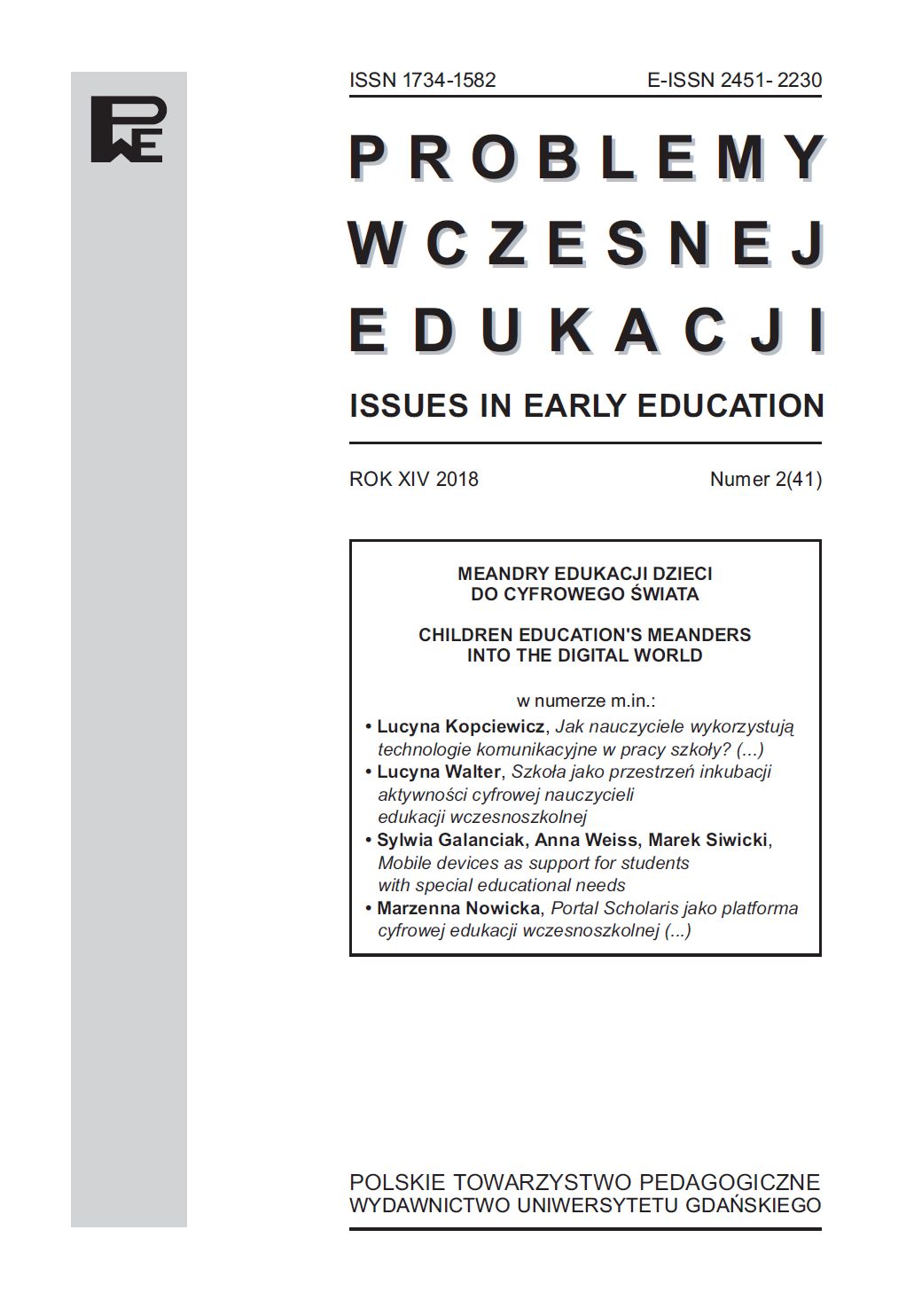„Tubylec tubylcowi nierówny”. Przyszli nauczyciele o uczeniu się w epoce cyfrowej
DOI:
https://doi.org/10.26881/pwe.2018.41.12Słowa kluczowe:
cyfrowi tubylcy, technologie cyfrowe, elektroniczna mapa myśliAbstrakt
In the study we present results of two research projects conducted simultaneously at the Faculty of Social Sciences, UWM in Olsztyn referring to the place digital technologies have in the learning processes in the opinions of Early Education students. The results show that the group of surveyed students might be situated on the borderline of digital natives and digital immigrants’ worlds. The conducted survey demonstrated limited trust to digital sources of knowledge amongst students and discrepancy between their personal experiences with using new technology, on a daily basis, and traditional ways of learning proposed by the University. The analysis of the case study indicated that for preparing future teachers to work with children (digital natives), it is important to organize a learning environment in which both worlds – digital and analogue – are connected.
Downloads
Bibliografia
Babbie E. (2006), Badania społeczne w praktyce. Warszawa, Wydawnictwo Naukowe PWN.
Cantelmi T. (2015), Technopłynność. Człowiek w epoce Internetu: Technopłynny umysł. Kraków, Wydawnictwo OO. Franciszkanów „Bratni Zew” Sp. z o.o.
Czachorowski S., Ryślenie, czyli myślograficznie i lapbookowo. https://www.edunews.pl/narzedzia-i-projekty/narzedzia-edukacyjne/3649-ryslenie-czyli-myslograficznie-i-lapbookowo.
Dylak S. (2013), Architektura wiedzy w szkole. Warszawa, Wydawnictwo Difin.
Klichowski M. (2017), Learning in cyberparks. Poznań, Wydawnictwo Naukowe UAM.
Kohlberg L., Mayer R. (1972), Development as the aim of Education. “Harvard Educational Review”, 42 (4).
Kyles C.R., Olafson L. (2008), Uncovering Preservice Teachers’ Beliefs About Diversity Through Reflective Writing. “Urban Education”, 43 (5).
Nowicka M. (2018), E-podręcznik jako multimedialny środek dydaktyczny w świetle wypowiedzi studentek wczesnej edukacji. W: M. Nowicka, J. Dziekońska (red.), Cyfrowy tubylec w szkole. Diagnozy i otwarcia. Tom I: Współczesny uczeń a dydaktyka 2.0. Toruń, Wydawnictwo Adam Marszałek.
Perzycka E. (2015), The Essence and Meaning of ICT-assisted Education In the Light of a Culture of Trust. W: E. Perzycka (red.), Contexts of Trust in ICT-Aided Educational Interactions. Szczecin, Wydawnictwo Naukowe Uniwersytetu Szczecińskiego.
Polak M., W poszukiwaniu nowych modeli kształcenia. https://edunews.pl/badania-i-debaty/ wywiady/749-w-poszukiwaniu-nowych-modeli-ksztalcenia.
Prensky M. (2001), Digital Natives, Digital Immigrants. Part 1. “On the Horizon”, 9 (5).
Schugurensky D. (2000), The forms of informal learning: towards a conceptualization of the field. Working Paper 19-2000. Presented at the New Approaches for Lifelong Learning (NALL) Fourth Annual Conference, October 6–8. http://hdl.handle.net/1807/2733.
Siemens G. (2005), Connectivism: A learning theory for the Digital Age. “International Journal of Instructional Technology and Distance Learning”, 2 (1).
Stake R. (1994), Case Studies. W: N.K. Denzin, Y.S. Lincoln (red.), Handbook of Qualitative Research. Part II. Thousand Oaks, Sage Publications.

 Uniwersyteckie Czasopisma Naukowe
Uniwersyteckie Czasopisma Naukowe





